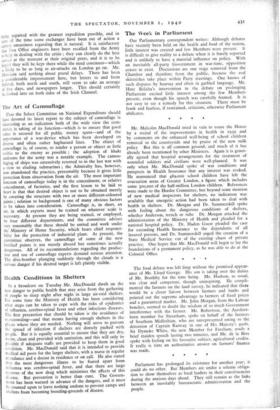The Art of Camouflage
That the Select Committee on National Expenditure should have devoted its latest report to the subject of camouflage is interesting as an indication both of the wide view the com- mittee is taking of its function—which is to ensure that good value is secured for all public money spent—and of the importance of a war-device which has been developed on diverse and often rather haphazard lines. The object of camouflage is, of course, to render a person or object as little visible to the enemy as possible ; the adoption of khaki uniforms for the army was a notable example. The camou- flaging of ships was extensively resorted to in the last war with a view to eluding submarines ; the Admiralty has, however, now abandoned the practice, presumably because it gives little protection from observation from the air. The most important function of camouflage today is in the concealment, or relative concealment, of factories, and the first lesson to be laid to heart is that that desired object is not to be obtained merely by covering the structure with two or more different-coloured paints ; relation to background is one of many obvious factors to be taken into consideration. Camouflage is, in short, an art, in which experts must be trained on whatever scale is necessary. At present they are being trained, or employed, by four different departments, and the committee advises very reasonably that these should be united and work under the Ministry of Home Security, which bears chief responsi- bility for the protection of industrial plant. At present, the committee observes, the camouflage of some of the new fortified points is not merely absurd but sometimes actually dangerous. All of its recommendations regarding the produc- tion and use of camouflage experts demand serious attention. The dive-bomber plunging suddenly through the clouds is a serious danger if his desired target is left plainly visible.






































 Previous page
Previous page